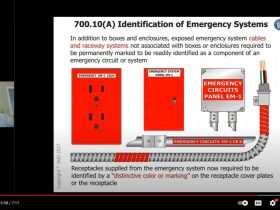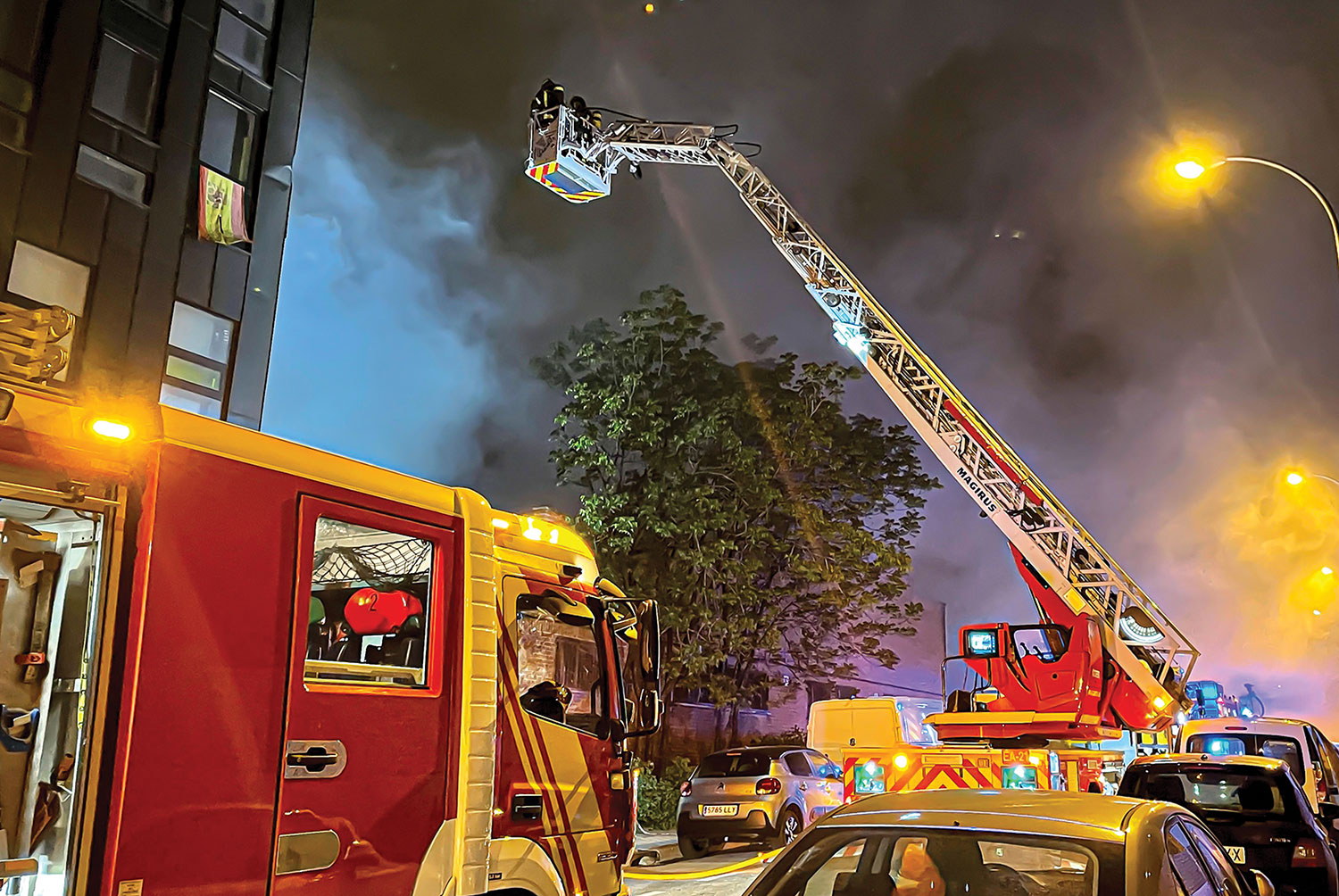Let say, a designer decides to install a backup power supply for the IT network in the office, or to provide an alternate source of power to the sump pump in a building. Or a decision is made to have a standby power source for lighting in all classrooms of a high school. Or what if a backup power supply is provided for all building exhaust, makeup fans and fans used for smoke control and smoke venting? And what about the same approach to the elevators or fire pumps? And how about the standby power intended for emergency lighting in exits or in corridors used by the public? And to make it fun, let’s even consider a backup power supply to a typical house. What kind of power supply sources should be used to provide a standby power supply to all these loads?
The answer could be found in the National Building Code of Canada (NBCC) and in the Canadian Electrical Code (CEC).
Let’s use the first example: standby power source for the office IT system. Is a battery allowed to be used for this purpose? What about a UPS, a solar panel, a generator or any available source of alternate power?
The NBCC specifically mandates that only certain systems must be equipped with the emergency power supply. It also lists the allowed sources of the emergency power for particular equipment comprising these “life safety systems.” Section 46 of the CEC defineslife safety systemsand explains what electrical equipment represented by these life safety systems must be provided with a specific type of the emergency power supply source as required by the NBCC.
Let’s take a look at what equipment is actually mandated by the NBCC to be furnished with the emergency power. NBCC states that the emergency power supplied by batteries, generators or by a combination of both must be provided for emergency lighting required by the Code, for electrically connected exit signs, and for fire alarm systems. The Building Code also states that the electrical equipment such as elevators in high buildings, fire pumps, fans used for smoke control and smoke venting (and the latter includes smoke dampers) must be provided with an emergency power supply by a generator. The NBCC is also quite clear by stating that the generator used for this purpose must conform to the CSA standard C282. “Emergency Electrical Power Supply for Buildings.”

Figure 8. “Reproduced with the permission of Canadian Standards Association from CSA’s C22.1-09 Canadian Electrical Code, Part I (21st Edition), Safety Standard for Electrical Installations which is copyrighted by Canadian Standards Association, 5060 Spectrum Way, Suite 100 Mississauga, ON L4W 5N6. While use of this material has been authorized, CSA shall not be responsible for the manner in which the information is presented, nor for any interpretations thereof. For more information on CSA or to purchase standards, please visit our website at www.shopcsa.ca or call 1-800-463- 6727”.
Section 46 of the CEC covers installation requirements for equipment comprising life safety systems, for the emergency power supply mandated by the NBCC for these systems, and for wiring methods between the required power sources and life safety systems. This section also re-enforces the fact that when a generator is used as a power supply to the life safety systems, it must conform to CSA standard C282.
So far, so good. Now we can re-visit our earlier examples of the loads intended to be provided with a backup power and see what could be used as an alternate power source for these loads.
Thus, if the IT system is to be equipped with the emergency power supply, there is no stringent requirement for use of only batteries or only the C282 conforming emergency generator. A similar approach is true for a backup power to a sump pump, to the lighting in school classrooms, to the loads of a house or to a typical makeup/exhaust fan (unless these fans are used as a part of smoke control or smoke venting system). Therefore, any available piece of electrical equipment that is capable to provide an alternate source of power could be allowed in this case. One thing, however, should be always kept in mind: every piece of equipment that is used in electrical installation must be approved.
So, if a generator is used in this case, it does not have to meet provisions of the CSA standard C282. It simply has to be certified to the CSA safety standard C22.2 No. 100 “Motors and Generators.” If a UPS is intended for this purpose—no problem, provided that the UPS is approved (i.e., it is designed, constructed, tested and certified in accordance with the CSA safety standard C22.2 No. 107.3 “Uninterruptible Power Systems”). If we want to use a battery, a solar PV system, a wind turbine or a fuel cell—by all means (provided that each of these alternate power sources is approved). However, if an alternate power supply source is mandated by the NBCC for specific life safety equipment, it is a different story, as was shown above.
But what if a decision is made to connect the loads, such as IT, general lighting, heating and air conditioning, to a generator that is required to supply an emergency power to a life safety system?
Is this allowed? The answer could be found in the CSA standard C282. This standard permits connection of these types of non-emergency loads to an emergency generator,ifsuch loads do not adversely affect the ability of the generator to provide the emergency power supply to the Code-mandated life safety systems. Section 46 of the CEC further explains this fact by prescribing wiring from the emergency power supply to the life safety system to run separately from the wiring to non-emergency equipment connected to this power supply. Appendix B Note on Rule 46-108(5) of the CEC (figure 8 on page 430 of the CE Code) explains that a separate transfer switch must be used for connection of such life safety systems, and that non-emergency equipment cannot be supplied from a generator via this transfer switch. Figure 8 also emphasizes the fact that a fire pump must be supplied from an emergency generator via its own, dedicated transfer switch specifically marked for fire pump service.
It appears that we have clarified the difference between the alternate power sources for the purpose of supplying various loads.
But,what about the “essential electrical loads” that are listed in Table 8 of the CSA standard Z32? These loads are not referenced in the NBCC, and these loads are not defined in Section 46 of the CEC as being part of life safety systems. So, what do we do? Can these loads (i.e., vital loads in surgical suites, in infant nurseries, in dialysis units of a health care facility) be supplied by the emergency generator via the transfer switch connecting life safety systems, or must a separate transfer switch be used for these essential loads? So far, the CEC is silent on this issue. However, the S/C responsible for Section 46 has recognized a need to clarify this matter and has recommended to the Technical Committee on the CE Code to revise Appendix B Note by adding the following wording:
It is also intended by this Rule that for the purpose of Rule 46-108, the definition of “life safety systems” includes “essential electrical systems” described in Rule 24-300. Users of this Code should consult Table 8 of CAN/Z32 for a complete list of loads comprising an essential electrical system.
Hopefully, this article will help in clarifying requirements of Codes and Standards on the subject matter.
However, as usual, authorities with jurisdictional power for application and installation of emergency power supply sources to various loads must be consulted before the selection and installation of a power supply source.














Find Us on Socials